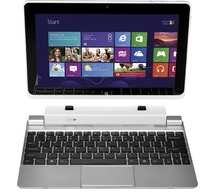Microsoft offers business users 'how to choose' Windows tablet guidance

Though there still seems to be a shortage of Windows 8 and Windows RT tablets available for purchase, Microsoft officials are trying to make the matrix of potential form factors a bit less confusing.

On December 14, via a post to the "Windows for Your Business" blog, Microsoft officials shared some broad guidance for how business users should think about buying Windows 8 and Windows RT tablets, if and when they are interested in doing so.
For the purposes of its "How to Choose" framework, Microsoft lumped all current and existing Windows 8 and Windows RT tablets into three categories: Intel Core systems running Windows 8; Intel System-on-a-chip (Atom) machines running Windows 8; and ARM System-on-a-chip devices running Windows RT. The first two groups of machines can run existing third-party Windows apps; ARM-based devices cannot.
At the highest level, users should figure out whether they are looking for a new "primary" device or a "companion" device, said post author Erwin Visser, a Senior Director in the Windows division. "Companion devices typically do not need the same workload or app capabilities, while mobility and connectivity are often even more important," he said.
With that caveat in mind, here's what Microsoft officials are suggesting:
Mobility: For the best mobility, choose Windows 8 tablets with Intel Atom processors or Windows RT tablets that are lightweight and have long battery life.
Workload: For heavier workloads, choose Windows 8 tablets with Intel Core processors that are more powerful and support larger amounts of memory
Apps: When desktop apps need to be used, choose Windows 8 tablets with Intel Core or Intel Atom processors. (For heavier workloads, see above.) If corporate network connectivity is available, business users can make use of RemoteApp on all types of tablets, Visser said. "For the employees in certain roles that rely on a dedicated line-of-business app to perform their duties, Windows RT tablets with new line-of-business apps is a good option," he added.
Connectivity: For the best corporate connectivity to corporate networks, choose Windows 8 tablets with Intel Core or Intel Atom processors running Windows 8 Enterprise to leverage DirectAccess.For occasional connectivity, choose Windows 8 tablets with Intel Core or Intel Atom processors that can automatically synchronize files using SkyDrive or SkyDrive Pro.
Visser noted that Windows RT tablets can connect to third-party VPN solutions using the built-in Microsoft VPN client using PPTP, L2TP, and IPSec/IKEv2 protocols. "If only e-mail access is required, all Windows tablet devices can use Exchange ActiveSync," he added.
Always On: For “always on” connectivity, choose Windows 8 tablets with Intel Atom processors or Windows RT tablets that support Connected Standby.
Manageability: For "full" manageability, choose Windows 8 tablets with Intel Core or Intel Atom processors that can be managed using Active Directory, Group Policy, and System Center Configuration Manager, allowing granular control and configuration of the device (including the ability to push out new versions of apps). For "simple" manageability, all types of Windows tablets can be managed via Windows Intune, Visser noted, with security and VPN settings pushed to the devices and line-of-business apps available for users to install as needed via a self-service portal or app.
Governance: Security policies (including those for passwords and encryption) can be configured on all types of Windows tablets via Exchange ActiveSync policies.
I think a "battery life" should have gotten more play, in spite of the fact few of the announced Windows 8 or Windows RT machines -- with a couple exceptions, including the Surface RT -- have much to brag about on that front.
Any quibbles or additional points readers think are worth mentioning for business users trying to navigate the Windows 8/Windows RT maze?